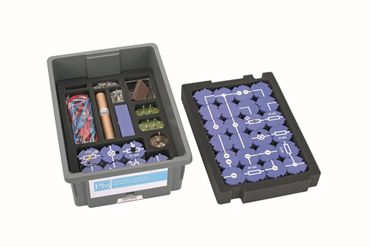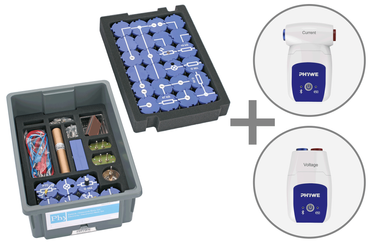Principle
The heating and lighting effects of electric current are well known to the students from everyday life, and they have already experimented with filament lamps and utilised their illuminating, or lighting, effect as a measure of the strength of electric current.
In this experiment, it is important that they realise that in all these processes, electrical energy is converted into thermal energy in the form of heat.
In the evaluation, one of the following themes can be handled according to the state of knowledge of the students: in the simplest case, the phenomenon and for a higher theoretical demand, the energy ballance.
Eel = Q with Eel = U × I × t.
The heat capacity of the glass vessel must be taken into consideration in the evaluation.
Q = [(cGlass + cWater) × mWater] × Δ T.
Benefits
- No additional cable connections between the building blocks needed - clear arragned and quick setup
- Contact saftey due to puzzle blocks system
- Corrosion-free gold plated contacts
- Doubled earning sucess: Electric circuit diagram on top, real components can be seen unterside
Tasks
How does an immersion heater work?
Set up a circuit with a model of an immersion heater and use it to convert electrical energy into thermal energy.



